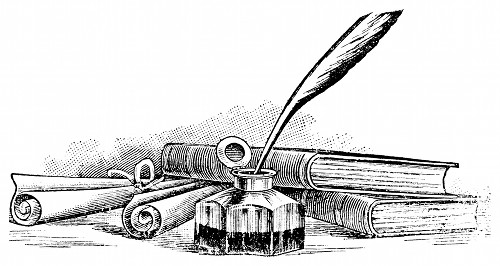 I have made several posts on Play-by-Post (PbP) gaming over the past week or so. Each of these posts have had a heavy GM focus where we’ve focused on pacing, narrative and props for PbPs. Today I want to talk about things you can do as a player to help contribute to the success of a PbP. One cannot expect the GM to carry all of the weight!
I have made several posts on Play-by-Post (PbP) gaming over the past week or so. Each of these posts have had a heavy GM focus where we’ve focused on pacing, narrative and props for PbPs. Today I want to talk about things you can do as a player to help contribute to the success of a PbP. One cannot expect the GM to carry all of the weight!
Pacing was one of the first areas I talked about from the GM side and the importance of keeping the game moving along at a reasonable rate. A player can also contribute to keeping the pace moving in a PbP.
Do your best to make your posts in a timely manner to keep from holding a game up. If you are going to be gone for an extended period of time, give the GM a heads up. They often just appreciate knowing and are happy to NPC your character while you are away. If things are simply very busy in your real life – and lets face it, that’s why we’re playing a PbP – then even simple one liners can be better than massive, verbose posts to keep things moving forward.
Now with that said, when the time permits do focus on descriptive posts. Just as descriptive narrative is important for a GM in his or her posts, do the same as a player. Add those extra details to your posts! They help others get a better feel for your character as well. Describe your actions and mannerisms, give people a hint as to what is going on in your character’s head. Bring your character to life! Some of the most memorable folks I have played with have posted in a form that was quite enjoyable to read.
Another phenomenon I see happen occasionally in PbP is player’s talking past each other or acting in a vacuum. Try to interact with the other players in your party. And when they try to interact with you through conversation or actions be sure to respond! Building this interaction with party members can go far to keep people engaged with the game and go far to keeping the PbP successful.
And finally – help your GM out and make sure you actions are clearly posted. Often I find putting something behind a spoiler tag as out of character that clearly states your actions can help make things a little easier for the GM. A happy GM makes for a happy PbP group!
By doing these things as a player you can help make the PbP you are playing in successful and a good time for all.
It certainly takes a combination of player support and GM support to result in a long running PbP. Sometimes the game just doesn’t work out – but I think if GMs and players start with the advice covered in this series of posts that you are well on your way to a successful play-by-post game!



